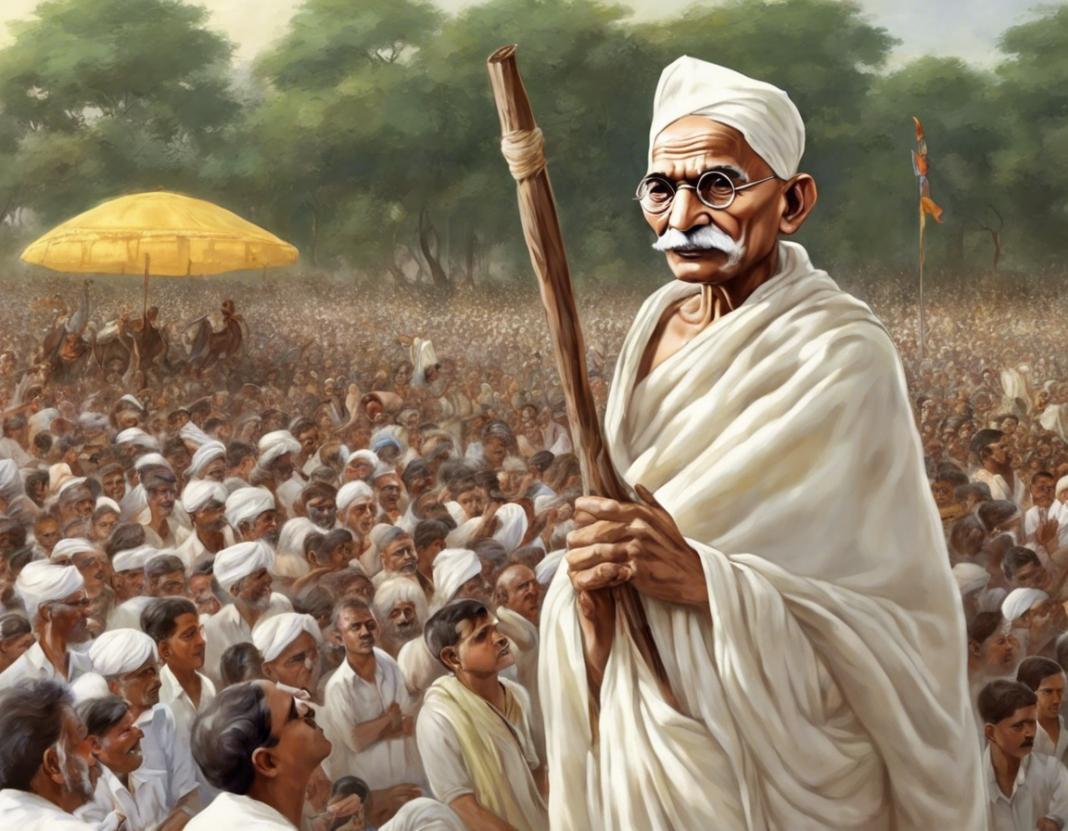Champaran Neel Aandolan: Mahatma Gandhi Ke Sath Kaun The?
Introduction
Champaran Neel Aandolan, also known as the Champaran Satyagraha, was a significant event in India’s freedom struggle led by Mahatma Gandhi. This movement marked the beginning of Gandhi’s active involvement in India’s fight for independence and had a profound impact on the farmers and the larger national movement against British colonial rule. But who were the key figures who stood alongside Mahatma Gandhi during this historic protest?
Mahatma Gandhi
Mahatma Gandhi, popularly known as the ‘Father of the Nation’, was the spearhead of the Champaran Neel Aandolan. His philosophy of nonviolent resistance, or Satyagraha, became a guiding force for the protestors in Champaran. Gandhi’s leadership and principles of truth and nonviolence inspired thousands to join the movement and challenge the oppressive policies of the British Raj.
Raj Kumar Shukla
Raj Kumar Shukla, a farmer from Champaran, played a pivotal role in inviting Mahatma Gandhi to Champaran to address the grievances of the farmers. Shukla’s persistence and determination in seeking Gandhi’s help were instrumental in bringing national attention to the exploitation faced by the local indigo farmers.
Brahmachari Kedar
Brahmachari Kedar was another prominent figure who closely worked with Mahatma Gandhi during the Champaran Neel Aandolan. He assisted Gandhi in understanding the ground realities of the indigo farmers and mobilizing support for the movement.
J.B. Kriplani
J.B. Kriplani, a close associate of Gandhi, actively participated in the Champaran Satyagraha. His organizational skills and commitment to the cause helped in coordinating the protest and ensuring its success.
Important Dates and Events
– The Champaran Neel Aandolan commenced on April 10, 1917, when Mahatma Gandhi arrived in Champaran.
– Gandhi conducted a detailed investigation to understand the issues faced by the farmers and the exploitative practices of the indigo planters.
– The British authorities issued an arrest warrant against Gandhi, but he refused to leave Champaran until justice was served.
– The protest concluded on April 18, 1917, with the British government accepting the demands of the farmers, marking a significant victory for the Satyagrahis.
Legacy of Champaran Neel Aandolan
The Champaran Neel Aandolan not only exposed the injustices faced by the farmers but also demonstrated the power of nonviolent resistance in effecting social and political change. The success of the Champaran Satyagraha emboldened Gandhi and paved the way for future movements such as the Kheda Satyagraha and the Non-Cooperation Movement.
Frequently Asked Questions (FAQs)
Q1: What were the main grievances of the farmers in Champaran?
A1: The indigo farmers in Champaran were forced to cultivate indigo on a portion of their land under the tinkathia system, wherein they had to surrender a substantial part of their produce to the British planters without adequate compensation.
Q2: How did Mahatma Gandhi become involved in the Champaran Neel Aandolan?
A2: Raj Kumar Shukla, a local farmer, invited Gandhi to Champaran to address the grievances of the farmers. Gandhi’s visit and subsequent involvement marked the beginning of the Champaran Satyagraha.
Q3: What role did nonviolent resistance play in the Champaran Neel Aandolan?
A3: Mahatma Gandhi’s principle of nonviolent resistance, or Satyagraha, was central to the Champaran protest. The Satyagrahis peacefully protested against the oppressive policies of the British government, garnering national and international support.
Q4: Who were some other notable figures who participated in the Champaran Satyagraha?
A4: Apart from Raj Kumar Shukla, Brahmachari Kedar, and J.B. Kriplani, leaders like Rajendra Prasad, Anugrah Narayan Sinha, and Mahadev Desai also played significant roles in the Champaran Neel Aandolan.
Q5: What was the outcome of the Champaran Neel Aandolan?
A5: The protest in Champaran was successful, with the British government agreeing to the demands of the farmers, including the abolition of the tinkathia system and fair compensation for their produce. This victory bolstered the morale of the freedom fighters and set a precedent for future struggles against colonial oppression.









